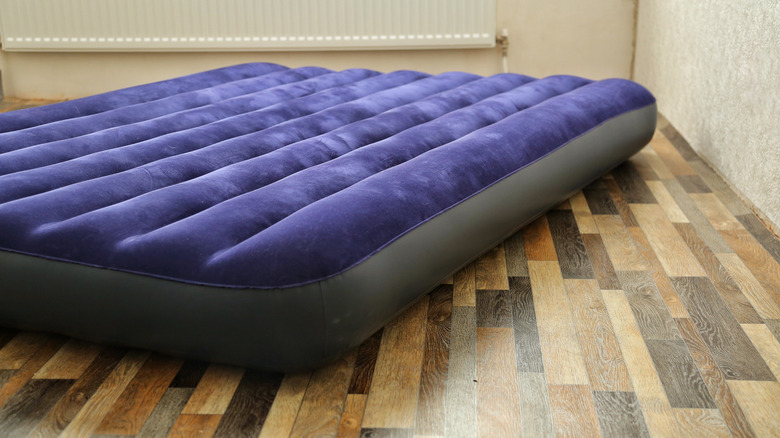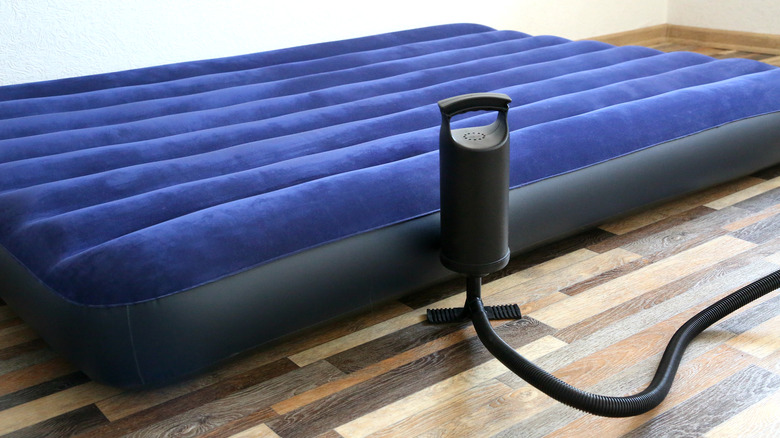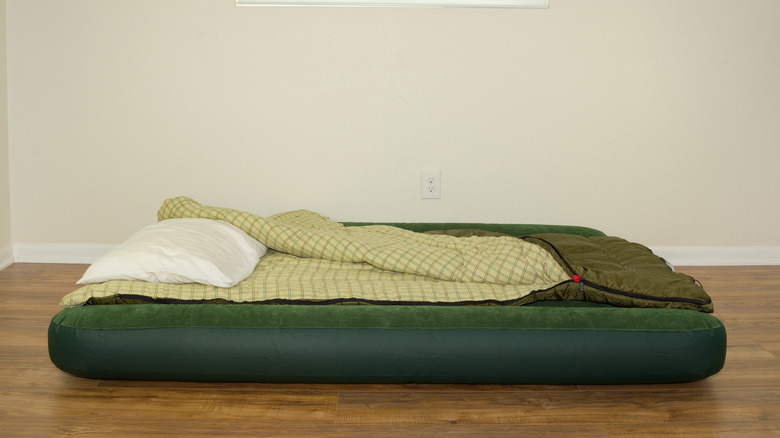What You Need To Know To Patch An Air Mattress
Whether you've recently housed overnight guests, gone on a camping excursion, or stayed in a temporary living space, you probably know the struggles of keeping an air mattress inflated. These beds are clearly not made to withstand the test of time. They are easily punctured or damaged, and sometimes they seem to lose air for no reason at all.
According to Mattress Nut, with proper care and maintenance, air mattresses can last two to eight years. This may be surprising for those who have dealt with flimsy mattresses. Proper care includes storing your mattress in a cool, safe place away from sharp objects like needles or pet's claws, per Inside Bedroom. Another way to properly care for your air mattress is by patching any holes or tears. If you're struggling with a leaky air mattress, you'll first want to detect the hole or tear. Then, you'll want to get out your patching equipment.
How to detect a hole or tear
To detect a leak, lean your blown-up mattress against a wall with the bottom side facing out. Looking closely, try to find any holes or tears. If the hole cannot be visibly detected, gently press down on the mattress and listen for the sound of air escaping, per the Sleep Foundation. You can also hover your hand over the mattress to feel for leaks, per Venchas.
However, if these methods prove unsuccessful, you could also try using soapy water. With the mattress still upright, wipe a soapy sponge against it and watch the bubbles. The bubbles will be more prominent over the hole, per the Sleep Foundation. If your mattress is waterproof, you could also submerge it in water and gently press it. This will cause air bubbles to rise out of the hole, per Venchas. Finally, Venchas recommends covering the mattress in baby powder, then gently pressing down. Wherever a cloud of powder emerges, that's where the hole is. Beware, though — this method can get messy.
If you find a leak around the pump, you will most likely need to replace your mattress. If the leak is on a seam, use a hot glue gun or other strong glue to patch it, per the Sleep Foundation. Deflated mattresses can also be caused by excessive heat or too much weight, per Inside Bedroom.
How to patch an air mattress
If you've discovered a hole that's not near the pump or on a seam, you'll want to patch it. You can fix a hole with a patch kit, a bike tire patch, or a shower curtain and glue.
The Sleep Foundation outlines how to patch an air mattress. After you discover the hole, the first step is to clean and dry the area. You'll want it to be dry to avoid mold or mildew and allow the adhesive to stick, per The Sleep Shop Inc. You can also circle the hole with a marker. Then, adjust your mattress so that the hole is completely exposed and on a flat surface. Apply the patch with at least 1/2 an inch of material surrounding it. Once applied, place a heavy object on top to ensure the adhesive sticks. You should wait at least eight hours for the patch to dry before using the mattress.
If you need a quick solution, you can also use duct tape, per Sleep Advisor. While the adhesive will eventually wear off, this solution may help you in the short term.


